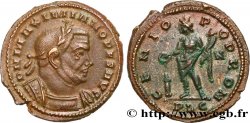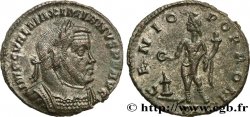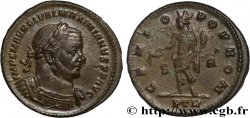brm_539771 - MAXIMIANUS HERCULIUS Follis ou nummus
Quantity
Add to your cart

Type : Follis ou nummus
Date: automne 308 - début 309
Date: 308-309
Mint name / Town : Lyon
Metal : copper
Diameter : 27 mm
Orientation dies : 6 h.
Weight : 7,27 g.
Coments on the condition:
Exemplaire sur un flan bien centré des deux côtés. Beau buste particulier de Maximien Hercule. Joli revers. Belle patine vert foncé
Catalogue references :
Obverse
Obverse legend : IMP C VAL MAXIMIANVS P F AVG.
Obverse description : Buste lauré et cuirassé de Maximien auguste à droite drapé sur l’épaule, vu de trois quarts en avant (B*01).
Obverse translation : “Imperator Cæsar Valerius Maximianus Pius Felix Augustus”, (L'empereur césar Valère Maximien pieux et heureux auguste).
Reverse
Reverse legend : GENIO - POP ROM/ (AUTEL)CI|H/S// PLG.
Reverse description : Genius (Génie) debout à gauche, coiffé du modius, le Génie porte l’himation, tenant une patère de la main droite et une corne d'abondance de la main gauche.
Reverse translation : “Genio Populi Romani”, (Au Génie du Peuple romain).
Commentary
Rubans de type 3 aux extrémités bouletées. Cuirasse et épaulière cloutées. Ptéryges fines. Ce type semble beaucoup plus rare que ne le laissent supposer les ouvrages généraux.








 Report a mistake
Report a mistake Print the page
Print the page Share my selection
Share my selection Ask a question
Ask a question Consign / sell
Consign / sell
 Full data
Full data



